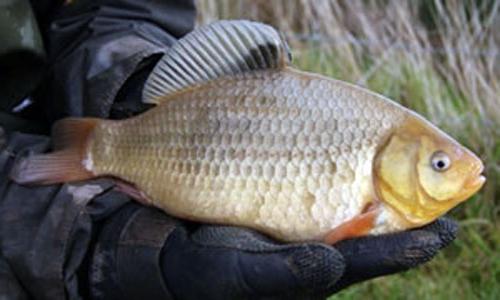Crucian carp is a fairly common fish species. Crucian carp is caught on the feeder and other gear during the entire warm period of the year, with the exception of spawning. Fishermen claim that catching crucian carp on a feeder is not so simple, because of all species of the carp family, crucian carp probably causes the greatest difficulties when fishing for this tackle. It is almost impossible to predict his preferences in food in advance. Even during the day, he can change his diet several times.

Crucian carp is caught mainly in stagnant water, because, like other white fish, it prefers a heavily silted bottom, which cannot but affect feeder erection and gear. The optimal rigging of the feeder for crucian carp will be something like this: feeder mounting - inline or paternoster, hooks 10-14 sizes, main fishing line 0.16-0.25 and leashes 0.12-0.18. We recommend a fishing rod with a length of 3.6 m, a test of 40 g. The spool in the reel should be 2000-2500 in size. The length of the leashes should be no more than 40 cm, otherwise you will have to dig out the hook from the throat of the crucian carp, making considerable efforts, which will cause him significant damage, and by the end of the fishing your catch floats up belly up.
More about bait
It should be noted right away that there are a lot of various recipes for bait for crucian carp, but not everyone gives such a positive result as the one that will be proposed later. We take 1 part of ground biscuits, 1 part of breadcrumbs, 1 part of ground makucha (cake), 1 part of wheat bran, a little ground, well-fried seeds, very slightly ground corn and wheat and a small part of milk powder. The flavors of our bait can be: caramel, vanilla, fruit flavors or ground coriander. It is also possible to use fishmeal to enhance flavor. If there was a feeling that an insufficient amount of bait was obtained, then boiled barley or millet can be added to it. In spring, the addition of maggots or bloodworms will be very effective.
Fishing process
The recommended weight of the feeder is 10-30 g, since crucian carp is caught on a feeder, usually in very silty places, and in this regard, some difficulties may arise. For example, a feeder, even the smallest one, can completely immerse in silt. This problem is solved by the fact that the feeder for crucian carp can be equipped with a plate of non-sinkable material, which is inserted into the middle of the feeder. Her weight does not increase, only buoyancy grows.
Experienced fishermen recommend fishing with two fishing rods, as they bite crucian carp on the feeder rather lazily.
To attract the attention of schools of fish, we feed large pieces of bait close to the coast and a little further away, and fishing rods will be installed in this way. From large parts of the feed dregs will be induced, really attracting a school of fish.
There are times when it does not bite at all. As mentioned above, crucian carp bites very weakly on the feeder, however there is a way to “stir up” capricious fish. We pull the feeder a little to the shore along the bottom. Crashing into the bottom, the feeder creates the same turbidity that provokes the crucian carp to look for food. Using a long leash on the tackle, you can forcefully bite, because by pulling up the tackle, the hook hangs for a while in the water column, and then drops, which with high probability can simply make the fish bite. Good luck